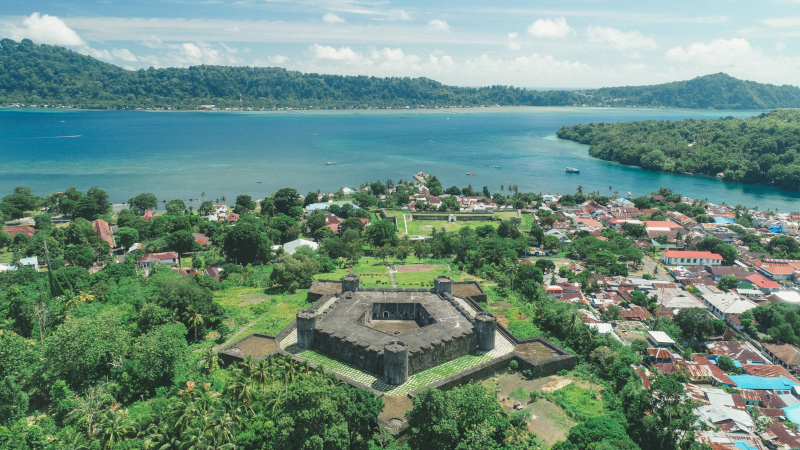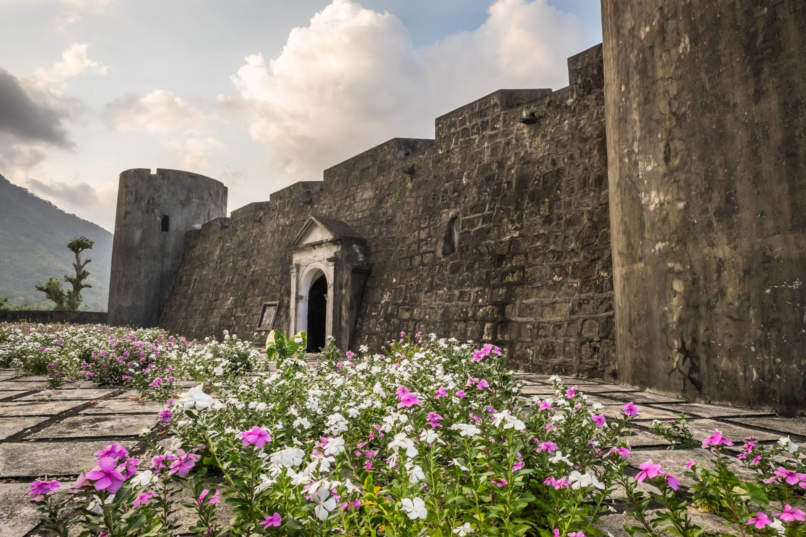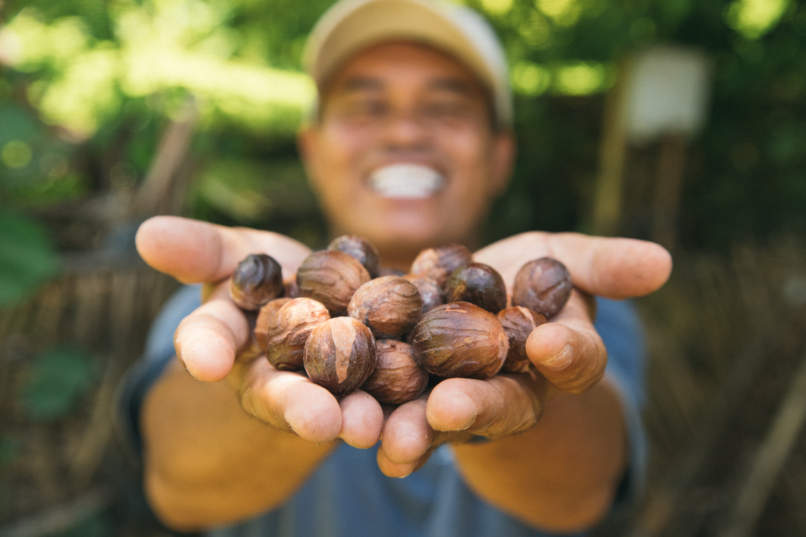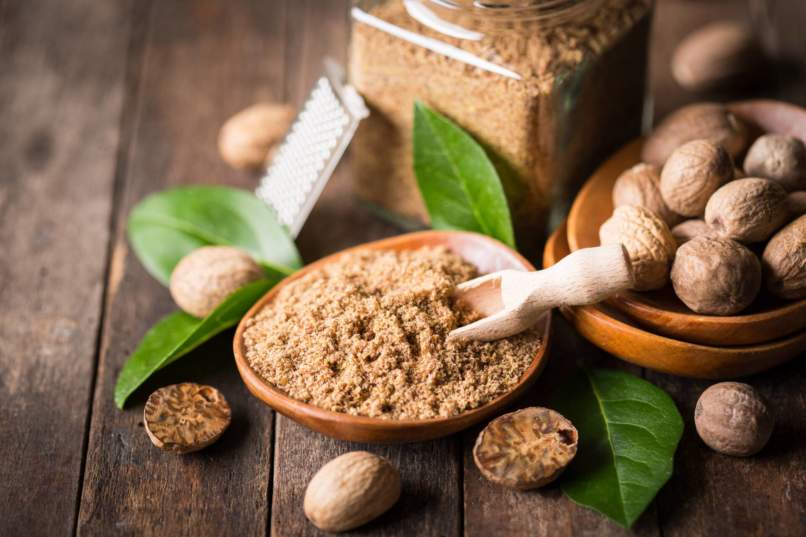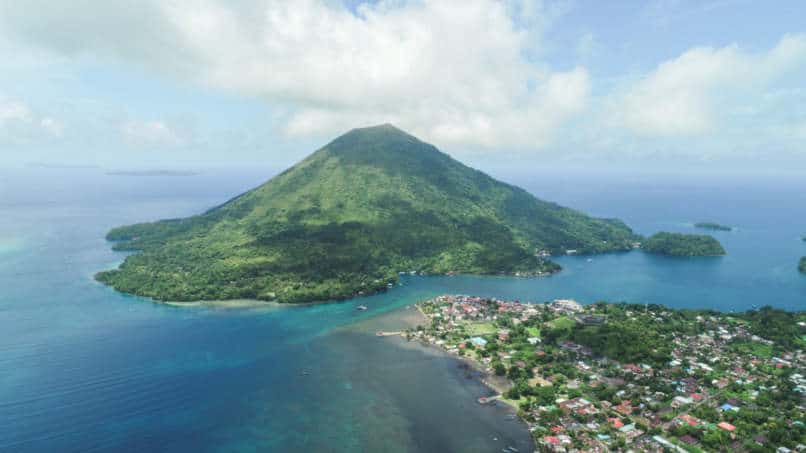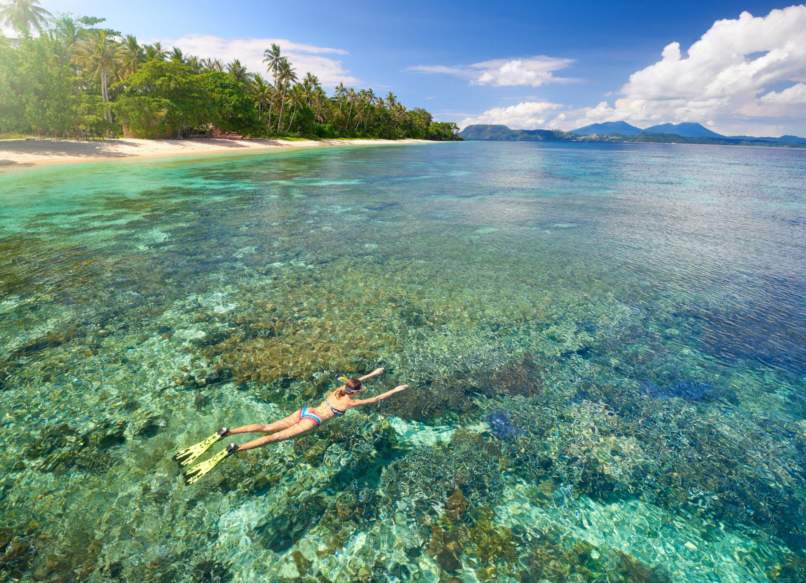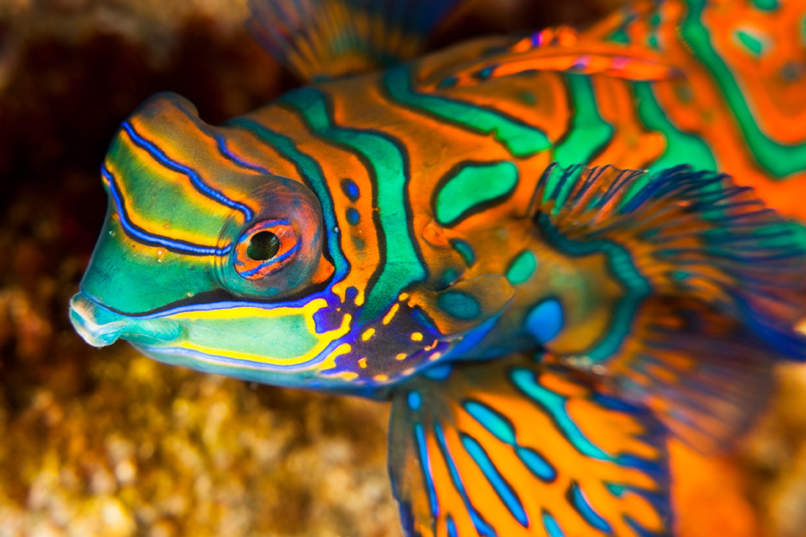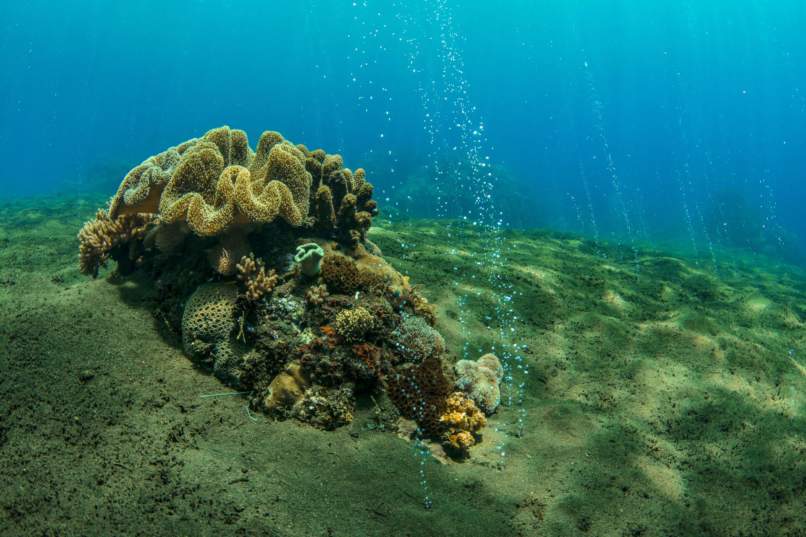Banda Neira: the Indonesian Island of Spice and Fire
Under review by UNESCO as a potential World Heritage Site, Banda Neira is part of the Spice Islands in Indonesia, a region steeped in history and culture where nature and marine life abound
One of ten volcanic islands in the remote Banda archipelago, Banda Neira beckons explorers to step back in time. Here in the principal town of the Banda islands, a quaint, peaceful and welcoming community of just over 18,000 spread over 17.6 square miles (45.6 sq km) live a simple, unhurried life alongside 17th century European relics – a reminder of the town’s bygone days as the world’s spice hub when the island was on the tip of every traders’ tongue.
Chiefly responsible for Banda Neira’s claim to fame is the native Myristica trees – towering and aromatic tropical evergreens that produce the spices nutmeg and mace. Banda Neira was already a flourishing regional trading post before the West arrived in the early 1500s and nutmeg, touted as a natural food preserver with medicinal properties, was traded with the finest silk, jade and even gold.
In 1512, after an arduous round-the-world journey which claimed the lives of many crew including that of famed explorer Ferdinand Magellan, Portuguese Francesco Serrano finally found the Spice Islands and became the first European to succeed in doing so. Over the next two-centuries, rival European powers such as the Dutch, Spanish and English followed in Serrano’s footsteps, and such was the demand of nutmeg that it was worth more than the price of gold at one point.
With its natural sheltered harbor and availability of flat land, Banda Neira functioned as the trading hub of the Spice Islands archipelago and the center of Dutch administration for the Sulawesi region during their colonial reign.
Built in 1611, Fort Belgica is Banda Neira’s most iconic and imposing fortification. Constructed by the Dutch atop a small plateau overlooking the harbor and backed by a 240-meter high rock, this fort was refurbished in the 90s and remains remarkably well-preserved to this day.
Designed to guard against sea threats and to protect the colonialists from any uprising by Banda Neira locals, the five-sided Fort Belgica features a somewhat unusual layout: five low angled outer bastions surrounding a higher inner pentagonal curtain wall with five tall, round and almost medieval-like towers on each vertex. Today it is regularly used for civic functions.
If you love a good relic, then you’ll relish wandering through Fort Belgica’s vaulted casemates and walking the crenelated ramparts. Above on a high tower, your reward is picturesque views of the surrounding seas, Banda Neira town, and the stunning Gunung Banda Api volcano.
Just a few hundred meters away lies another fort, Fort Nassau, which served as the Dutch East India Company’s headquarters for the Banda archipelago.
Other sights on the island include the now empty governor’s palace, now called Istana Mini (Mini Palace). Once, the mansion of the all-powerful Dutch controleur (inspector). Istana Mini was built in 1820 and features giant granite slabs, bright floor tiles, shiny marble, heavily carved beams, huge wooden doors and shutter-windows.
If it wasn’t for nutmeg, nobody would have heard of the Banda Islands. The Myristica tree very likely evolved here; until the 18th century when it was smuggled out, the Banda region was the only place on Earth where nutmeg and mace grew.
The Europeans were decidedly late to the nutmeg party. By the sixth century, the spice had reached Byzantium, 7,500 miles away on the other side of the world. Around 1,000AD, the Persian physician Ibn Sina had described the “jansi ban” or Banda nut. The Arabs traded nutmeg through the dark and middle ages, with the spice arriving in Venice towards the end of that period, seasoning the lavish tables of European aristocrats.
Nutmeg was also fantastically expensive: a 14th-century German price table reveals that a pound of it (454 grams) cost as much as “seven fat oxen” – which is equivalent to USD14,000 today! During the Black Death, nutmeg commanded these hysterical prices because desperate people believed it might ward off the deadly bubonic plague. Perhaps it did: scientist have since found that fleas appear to dislike smell of nutmeg, so it could be possible that someone carrying the spice might have avoided the fatal bite.
By the time the Old-World powers readied to sail the globe with their massive explorer ships, there was no greater maritime reward than finding the elusive spice islands and dominate a lucrative trade with their military and naval might. It was a tale of greed, conquest and bloodshed that lasted until French missionary-turned-entrepreneur Pierre Poivre smuggled 3,000 nutmeg plants to Mauritius in the mid-18th century, ending the Dutch monopoly.
Tragically, because of the Dutch atrocities committed during their rule, only 1,000 out of an original 15,000 ethnic Bandanese remain. Today, the oldest nutmeg plantations in the world await discovery on Banda Neira, as do traditional Bandanese culture such as kora kora war canoe racing that’s been kept alive by descendants of surviving natives to this day.
Rising 21,000 feet, or 640 meters, above sea level, Gunung Banda Api is an active volcano that resides on its own island of Banda Api (api is Indonesian for “fire”) across a narrow strait from Banda Neira. Presenting itself as a majestic, symmetrical sloping green cone, the picture-perfect volcano is home to many wildlife and bird species, as well as a sizeable village at its foot that practices mostly subsistence farming.
In May 1988, Gunung Banda Api experienced its last major eruption to date, sending a river of lava into the Banda Sea (thankfully away from the village). Initially, the lava destroyed existing coral reefs in the vicinity, before a miraculous rebirth happened…
A sparkling, sapphire-hued sea surrounds the Banda Indonesia archipelago, famous for its most pristine blue water. In the shallower parts, one can discover an abundance of internationally renowned snorkeling and diving spots. Astonishingly, the Banda Sea also plunges to a maximum depth of 24,409 feet, or 7,440 meters, in the Southern region – one of the deepest places on Earth.
Given its position near the center of the Coral Triangle, the Banda islands are prized for their pristine coral reefs and amazing diversity. Sprawling fields of colorful corals are home to thousands of reef fish species such as scorpion fish and ghost pipefish, and including many larger species such as groupers, snappers, Napoleon wrasses and even hammerheads. Close to the Banda Neira shore, the Mandarin fish and their dusk mating antics can be easily spotted. Renowned explorer and naturalist Alfred Russell Wallace wrote this of the Banda islands:
“Banda is a lovely little spot, its three islands enclosing a secure harbour from whence no outlet is visible, and with water so transparent, that living corals and even the minutest objects are plainly seen on the volcanic sand at a depth of seven or eight fathoms.”
Meanwhile, directly beneath Gunung Banda Api where lava had flowed into the sea during the 1988 eruption, a phenomenal coral rebirth has taken place. From wasteland to large, diverse underwater gardens in just five years, the transformation here has left marine biologists surprised and is nothing short of a miracle of nature.
At the site today, a natural sheltered environment provides spectacular opportunities for safe snorkeling and diving, even for beginners. They can explore a multitude of underwater gardens with densely packed corals such as gigantic table corals, warty-finger corals, bottle-brush corals and the acropora corals. This area has been described as “a kaleidoscope of life with endlessly varied coral formations and bright tropical fishes”.
For divers, the northernmost flow of lava on the north east coast of the island is the best place to explore. Here, from 20 down to 35 meters (65 to 115 feet), cabbage-leaf corals take over the scenery. Fusiliers, green-snout parrotfish, cuttlefish, as well as clown and black triggerfish are a common sight. Rocky outcrops break up the landscape, covered in corals and feather-stars with anthias and damsels swimming all over.
As you dive deeper you might encounter large Napoleon wrasse, schools of batfish and, during upwelling conditions bringing in rich planktonic water, the pelagic species are likely to visit. In this environment, mobula Rays like to feed on the rich plankton, whereas dogtooth tuna and blue trevally are often seen on the hunt.
Best of all, the seas of Banda islands are the most pristine in the region.
With history, culture, land-based and underwater adventures promising bucket list experiences at every turn, seldom, if ever, has there been a more all-encompassing travel destination in than Banda Neira and her surrounding islands.
Departing from the Indonesian city of Ambon, discover Banda Neira on board the Aqua Blu explorer cruise yacht every October and November.
| Depart | Ends | From USD (per person) | Itinerary | Nights | ||
| 05 Oct 2024 | 12 Oct 2024 | Loading... | SPICE ISLANDS (AMQ) - SPICE ISLANDS (AMQ) | 7 |  Checking availability Checking availability | |
| 12 Oct 2024 | 19 Oct 2024 | Loading... | SPICE ISLANDS (AMQ) - SPICE ISLANDS (AMQ) | 7 |                      | |
| 19 Oct 2024 | 26 Oct 2024 | Loading... | SPICE ISLANDS (AMQ) - SPICE ISLANDS (AMQ) | 7 |                      | |
| 26 Oct 2024 | 02 Nov 2024 | Loading... | SPICE ISLANDS (AMQ) - SPICE ISLANDS (AMQ) | 7 |                      | |
| 02 Nov 2024 | 09 Nov 2024 | Loading... | SPICE ISLANDS (AMQ) - SPICE ISLANDS (AMQ) | 7 |                      | |
| 09 Nov 2024 | 16 Nov 2024 | Loading... | SPICE ISLANDS (AMQ) - SPICE ISLANDS (AMQ) | 7 |                      | |
| 16 Nov 2024 | 23 Nov 2024 | Loading... | SPICE ISLANDS (AMQ) - SPICE ISLANDS (AMQ) | 7 |                      | |
| 23 Nov 2024 | 30 Nov 2024 | Loading... | SPICE ISLANDS (AMQ) - SPICE ISLANDS (AMQ) | 7 |                      | |
| 30 Nov 2024 | 07 Dec 2024 | Loading... | SPICE ISLANDS (AMQ) - SPICE ISLANDS (AMQ) | 7 |                      | |
| 11 Oct 2025 | 18 Oct 2025 | Loading... | SPICE ISLANDS (AMQ) - SPICE ISLANDS (AMQ) | 7 |                      |


















































































































































































































Setting the stage for the greatest luxury cruise expeditions in the Coral Triangle

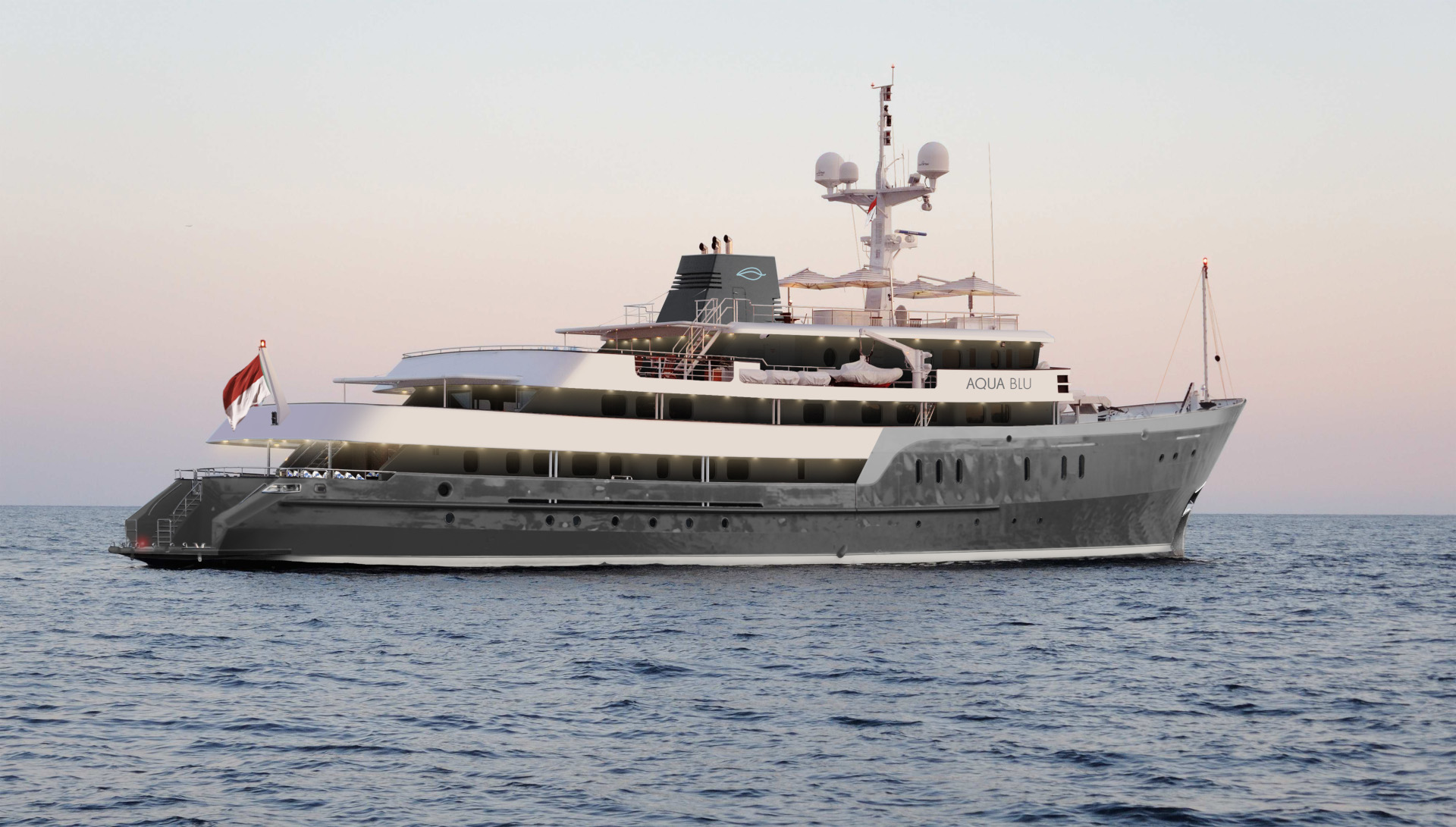
Setting the stage for the greatest luxury cruise expeditions in the Coral Triangle



